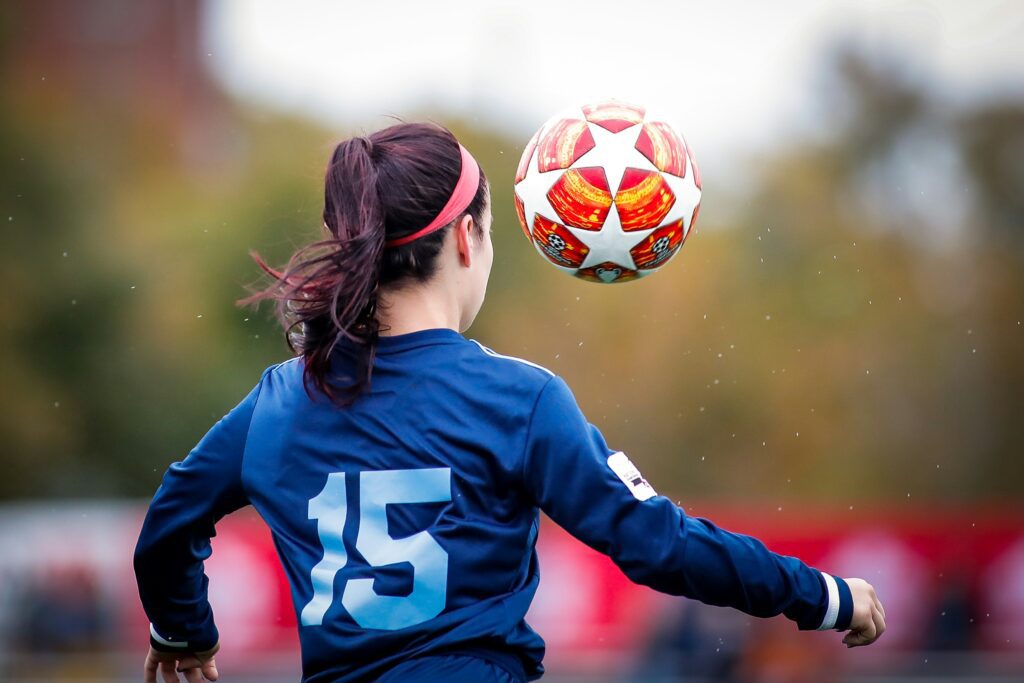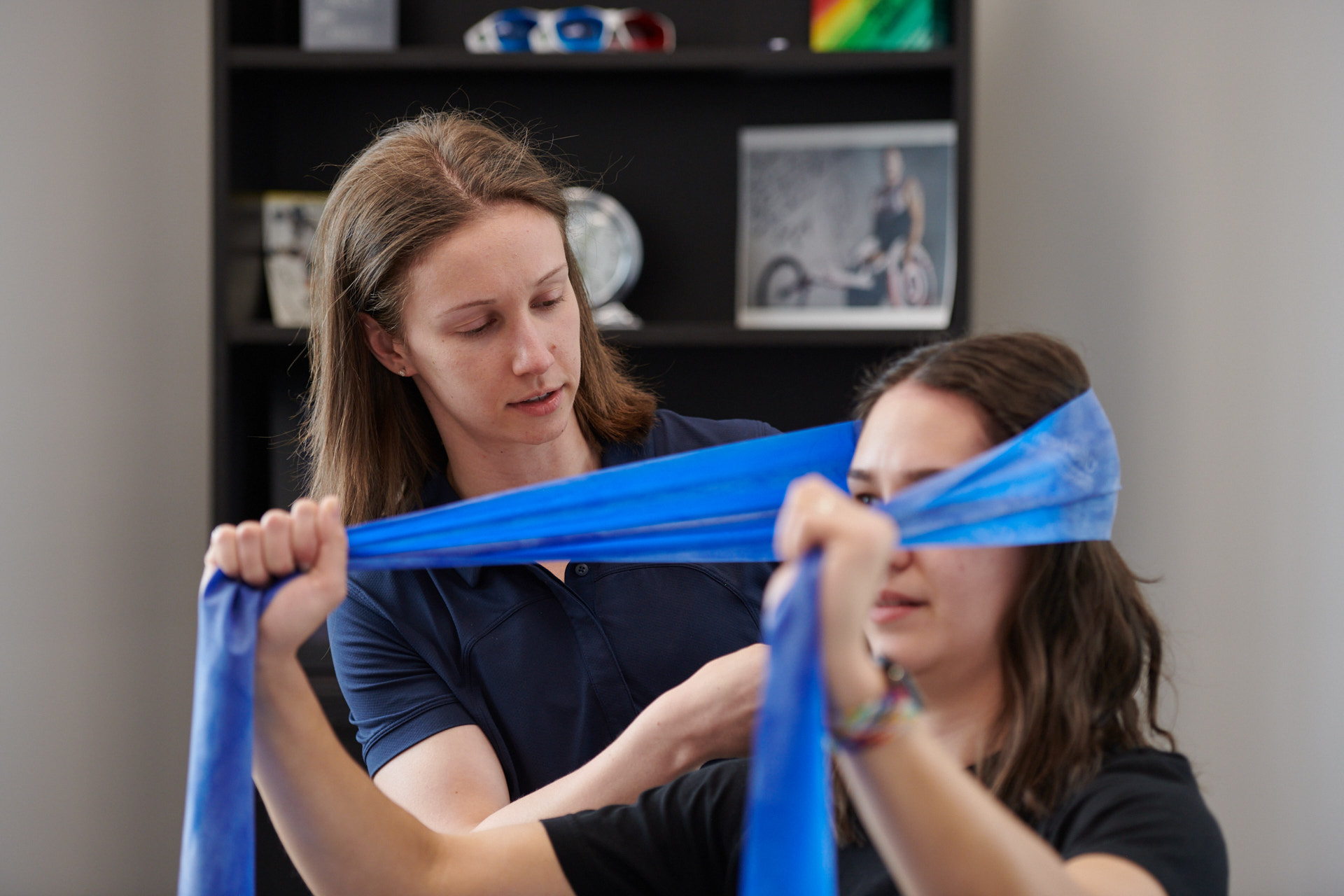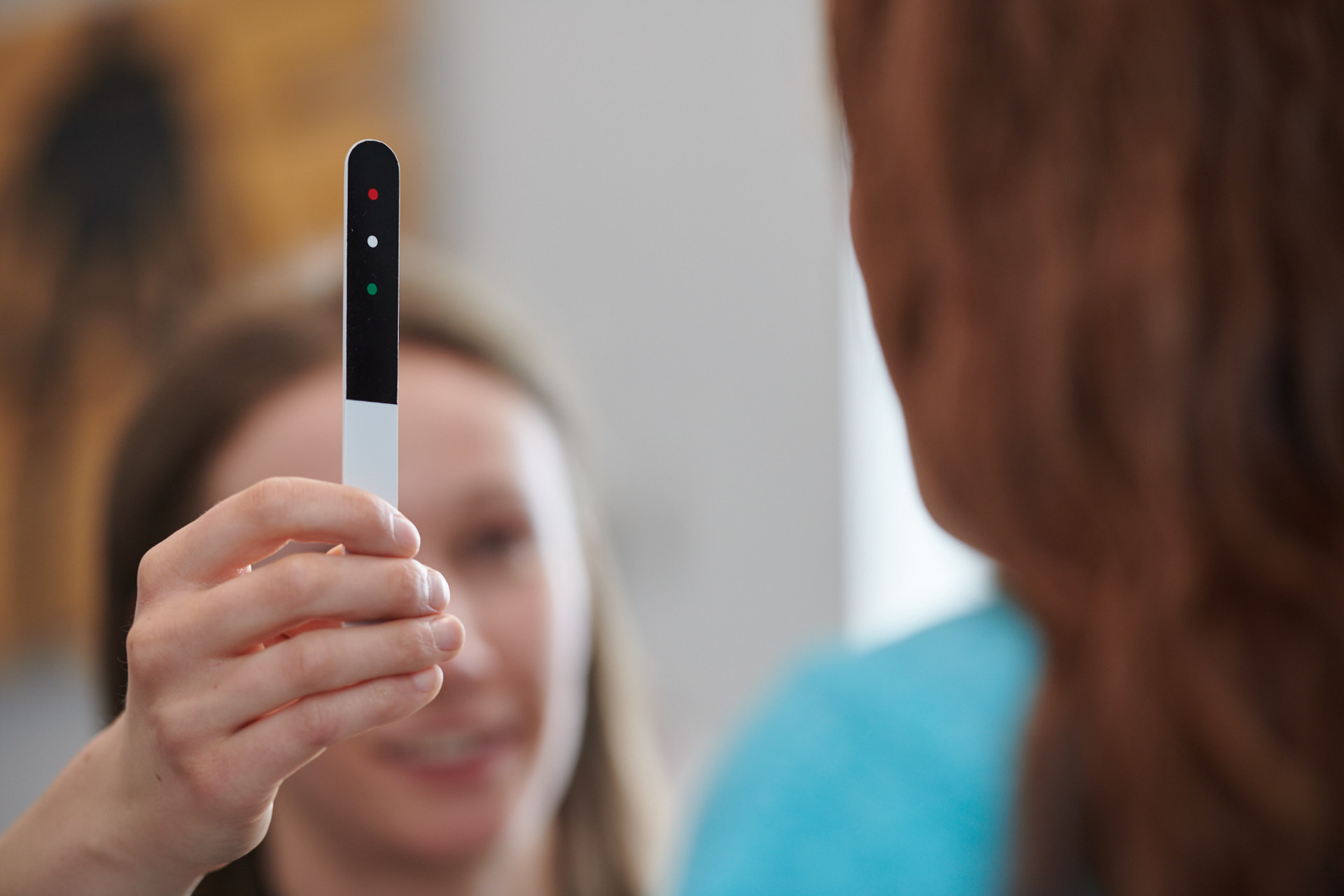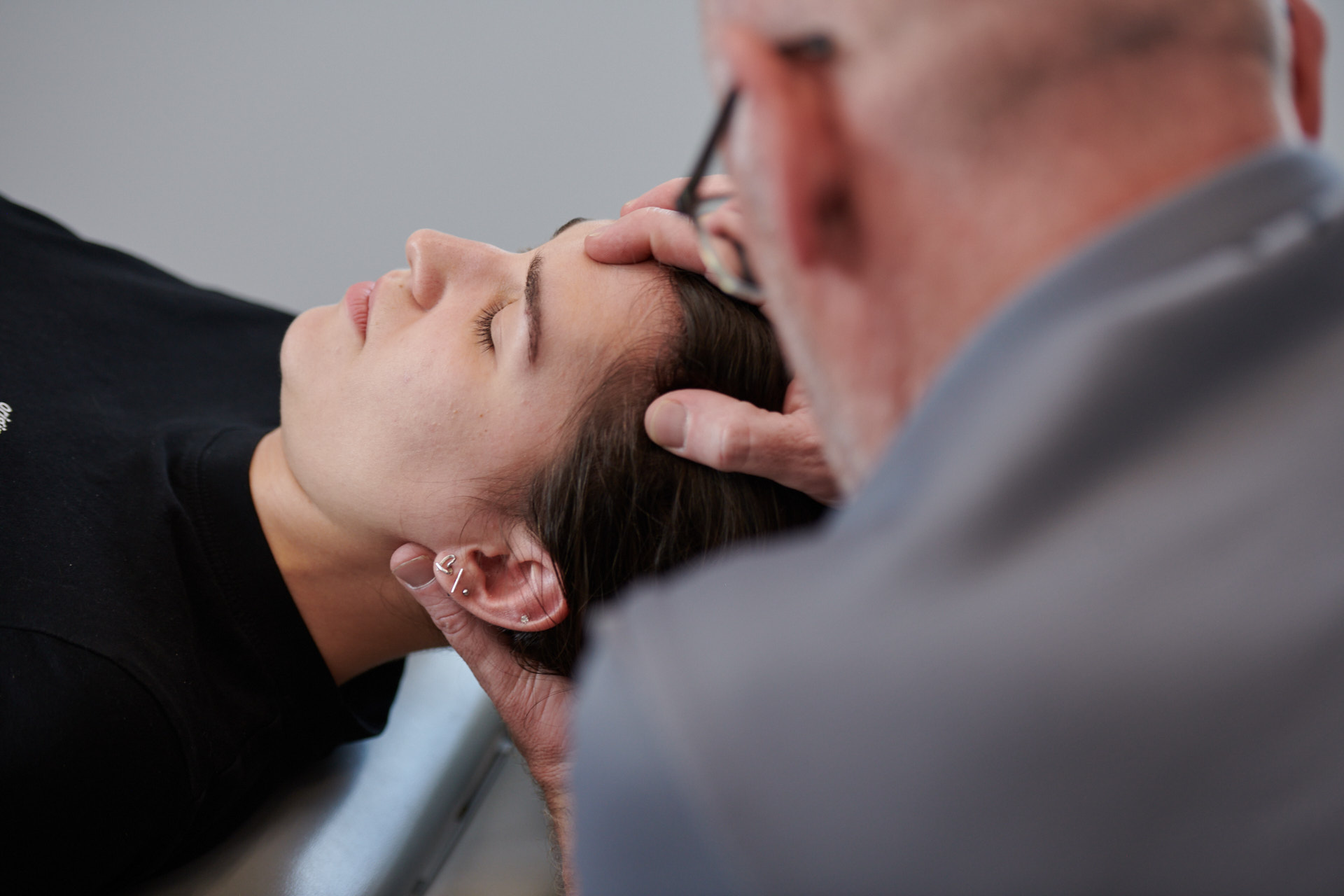Concussion to any athlete can be a very traumatic experience, whether it be at a youth level of sport or in professional competition. One of the major concerns regarding this condition is knowing when it is safe to go back to play.
Pressing back into the sport too quickly after a concussion can lead to serious health consequences such as: delayed recovery or prolonged symptoms, secondary injury or even another concussion (which can be more severe than the previous one), or Second Impact Syndrome – a rare but devastating type of brain injury.
In this article, we will discuss the gradual process athletes can follow to return to sports safely after a concussion. Experts in the Concussion in Sport Group (1) have outlined these guidelines as part of the most recent international consensus. Our goal is to provide athletes with a complete concussion guideline so that they can be sure they are fully recovered before returning to their sports. This way the risk of having additional injuries will be minimized.
Why a Gradual Return After a Sports Concussion Is Essential
The brain needs time to recover after a concussion. Symptoms like headaches or dizziness, as well as trouble concentrating after brain trauma are normal.
For an athlete, participating in contact sports with a concussion is a huge risk – and not one worth taking. In Canada, for example, where ice hockey, football, and other contact-heavy sports are practiced, a return to play too soon after concussion is not a healthy practice for any athlete in the long term.
The graduated return-to-sport (RTS) strategy is the one that has been recommended by the Concussion in Sport Group. This approach ensures that the athlete is ready to handle the demands of their sport without experiencing any symptoms. The process involves gradually increasing the intensity of training in a few steps.
| Steps | Objective | Activities | Goal |
| Step 1 | Symptom-limited activity | Activities that do not significantly increase symptoms (eg. going for a walk) | Allow the brain to heal. |
| Step 2 | Light aerobic exercise | Walking, jogging, cycling, etc. | Gradually increase heart rate (intensity), without increasing symptoms too much |
| Step 3 | Sport-specific exercise | Running and simple sport-specific drills, no contact. | Increase movement, and monitor symptoms. |
| Step 4 | Higher-intensity, non-contact drills | Complex drills, team practice, no contact. | Test exertion without symptoms. |
| Step 5 | Full-contact practice | Normal training with full contact. | Ensure tolerance of full practice. |
| Step 6 | Full return to sport | Return to competitive play. | Safely resume normal sport. |
6 Stages Of Concussion Recovery For Athletes
The 6-Step Graduated Return-to-Sport Protocol
The following six steps outline the newest iteration of the graduated return-to-sport protocol. Each step should take a minimum of 24 hours, and athletes should not move to the next step until they are successful at exerting at the current level (see below for what qualifies as “success”). If symptoms are exacerbated above the indicated levels, the athlete should stop the activity and rest until symptoms subside, then return to the previous step.
Step 1: Symptom-Limited Activity
This stage can be initiated within 24 hours of injury.
Step 1 Objective: Step-wise progression of pre-injury lifestyle (school and other activities).
Step 1 Activities: This first step includes daily activities that do not exacerbate symptoms by more than 2 points above where they started (on a 10-point scale). As well, the symptom elevation should not stay for more than an hour after finishing the activity.
For example, it is recommended that a daily, outdoor walk can be a beneficial form of light activity during the initial stages of concussion recovery. If you find your symptoms hovering around a 4 out of 10, and a 30-minute outdoor walk increases those symptoms to 6 out of 10, and that symptom elevation lasts for about 30 minutes, this is within the safety zone of exercise for step 1.
On the other hand, if a bike ride for 1 hour increases symptoms to a 7 or 8 out of 10 and those symptoms put you down for the rest of the day, that means your brain is not quite ready for that level of activity. In that case, consider waiting for another 24 hours and attempting a lighter form of activity to keep symptoms below that threshold.
Remember, light physical activity can be a helpful tool in your recovery – even in the early stages. Find an activity level that is suitable for you.
Step 1 Goal: The goal is to allow the brain to start its recovery process. The next step can only be undertaken once the athlete can carry out basic light self-care tasks (including moving about, doing some light house chores, or school work) and those tasks do not cause symptoms to become more than mildly elevated for a brief period of time.
Note: The 2-point rule applies not just to physical activity, but cognitive activity as well (schoolwork, job-related tasks). The goal is to gradually expose yourself to greater physical and cognitive demand, while keeping symptoms in-check.
Step 2: Aerobic Exercise
Move into this stage if daily activities around the home, as well as light physical activity (such as outdoor walking), have been going well for at least 24 hours. That is, these activities do not cause anything more than a minor and brief exacerbation of symptoms. (2-point rule).
Step 2 Objective: To elevate heart rate through light exercise. This stage has two subparts Stage 2A (Light) and Stage 2B (Moderate).
Step 2 Activities: This stage includes target heart rate activities such as walking, swimming, or slow to moderate stationary cycling. You may consider starting some light resistance training at this stage as well, following the 2-point rule. Consider cutting your regular resistance load down to 50% of pre-concussion levels to start.
For step 2A, try to get your heart rate up to 55% of your maximum (use 220 minus your age to calculate your max heart rate). This may simply be a medium-paced walk. If this goes well, progress to step 2B, allowing your heart rate to increase to about 70% of your maximum. Aim for 20-30 mins of exercise bouts when first starting out, and increase the duration as tolerated.
Step 2 Goal: The aim of step 2 is to increase the athlete’s exercise intensity to a level that does not significantly increase symptoms. If exercising within these parameters causes more than a mild symptom response (greater than 2 points above baseline) or symptom increases last longer than 1 hour after stopping the exercise, move back down to Step 1 for at least another 24 hours.
Note: At stage 2, your healthcare provider may instead use something called the Buffalo Concussion Treadmill Test to determine an exertion threshold suitable to you and your stage of recovery. Remember that every concussion is different. Some athletes may be able to begin exerting at a higher level than 55% for example. However, if you do not have access to a clinical provider who can conduct this test, it is important to follow Steps 2A and 2B as noted above.
Step 3: Sport-Specific Exercise
Proceed to this stage when you are able to exercise to 70% of your heart rate maximum with no more than a mild and brief exacerbation of symptoms (2-point rule).
Step 3 Objective: Include sport-specific activities and training drills (apart from the team setting to prevent accidental head impact).
Step 3 Activities: This step involves sport-specific drills and exercises that don’t involve contact. For example, a soccer player might do dribbling or passing drills, while a hockey player might skate through pylons without engaging in puck handling to start. Allow sessions to elevate your heart rate to more closely mimic sporting conditions, but leave the full intensity exertion for step 4.
Step 3 Goal: The goal is to reintroduce movement and coordination that mimic the demands of the sport while still avoiding any risk of head impact.
Note: Follow the 2-point symptom rule for sport-specific exercises as well. If these types of drills cause more than a mild and brief symptom response, go back to Step 2 for a minimum of 24 hours.
Step 4: Non-Contact Training Drills
By Step 4, you should be symptom-free both at rest and with exercise. You should be returned to your baseline level of function (speak with your healthcare provider to readminister your baseline test if you have one).
Step 4 Objective: To increase the exercise intensity, add more challenging drills, and get back into the team atmosphere (without contact).
Step 4 Activities: In this step, you can take part in more complex training sessions that have high-intensity exercise and coordination activities. This can include passing and shooting drills in soccer or practicing plays in football with your team. Just be careful not to put yourself at risk of collision or contact. It can be helpful to wear a different colour of jersey to ensure players and coaches are aware that you are not participating in full practice activities that pose risk of contact.
Step 4 Goal: The goal is to test the athlete’s ability to handle higher levels of exertion and more dynamic movements without triggering symptoms. Prepare for sport.
Step 5: Full-Contact Practice
To progress to Step 5, you should be symptom-free with full sport-specific training in a team setting (when applicable to your sport). You will need medical clearance prior to returning to any form of contact play.
Step 5 Objective: Return to full training (practice) activities with contact
Step 5 Activities: After receiving medical clearance, you can return to full-contact practice. This step allows them to fully engage in practice sessions with all the normal elements of their sport, including contact, tackling, and scrimmaging.
Step 5 Goal: The goal of this stage is to ensure the athletes can handle full participation in their sport without any symptoms. The athlete usually regains confidence in their ability to perform optimally at this stage.
Note: Coaches, volunteer team trainers, and doctors should watch the athlete closely to make sure they’re ready to play again. If the athlete starts having symptoms, they should talk to their doctor and go back to step four.
Step 6: Return to Play
Step 6 Objective: Safe return to competition.
Step 6 Activities: At this final stage, you can return to full competition in your sport. This means you can play at the same level you did before your injury.
Step 6 Goal: The aim is to ensure the athlete is fully recovered and be able to play their sport again without any limitations
Important Considerations
While this graduated return-to-sport protocol provides a structured pathway for recovery, every concussion is different, and recovery times can vary. Some athletes may progress through the steps more quickly, while others may need more time to fully recover. It’s important to be patient and not rush the process.
Here are a few additional considerations that you should keep in mind during your recovery
1. Medical Clearance: Do not resume playing any contact sport (step 5) until your doctor or nurse practitioner gives you the go-ahead. It’s important to ensure that the injury is healed completely and that you are ready to return to sport.
2. Listen to Your Body: Athletes should be encouraged to communicate openly about their symptoms throughout the recovery process. Returning to sport while still experiencing symptoms increases the risk of further injury and prolongs recovery.
3. Psychological Impact: The psychological effects of a concussion can be just as challenging as the physical symptoms. Athletes may experience anxiety, frustration, or fear about returning to play. Support from coaches, trainers, and teammates can help ease this transition.
4. Risk of Reinjury: Athletes who return to play too soon are at higher risk of sustaining another concussion, which can have more severe and long-lasting effects. Following the graduated return-to-sport protocol reduces this risk.
And don’t forget, the most important aspect is patience. Take it one step at a time.
Prioritising Health Over Haste
Returning to sport after a concussion is a process that requires patience, discipline, and, most importantly, a focus on health and safety. By following the sport concussion guidelines we provided in this article, you’ll be able to safely return to the sport you love. But Remember, your long-term health is far more important than getting back on the field too soon.
No game, practice, or competition is worth risking long-term health. By following these guidelines and ensuring that you are fully recovered before you return to play, you can help protect your well-being and continue enjoying the sports you love.
References:
1. Patricios JS, Schneider KJ, Dvorak J, et al. Consensus statement on concussion in sport: the 6th International Conference on Concussion in Sport-Amsterdam, October 2022. Br J Sports Med. 2023 Jun;57(11):695-711.






